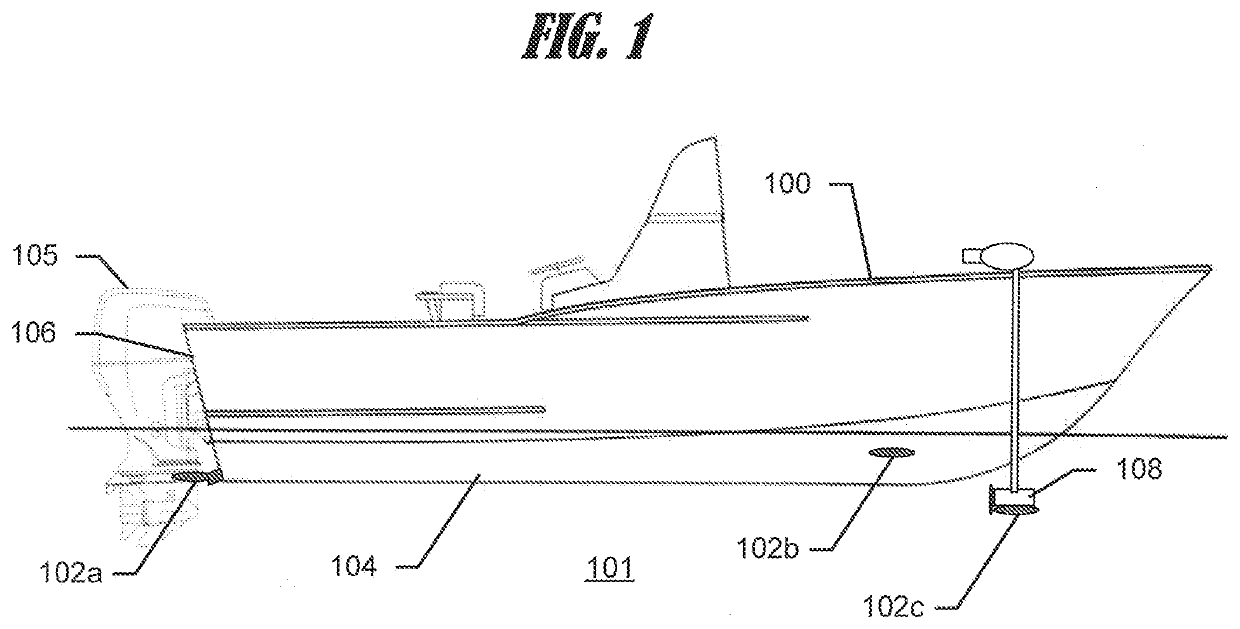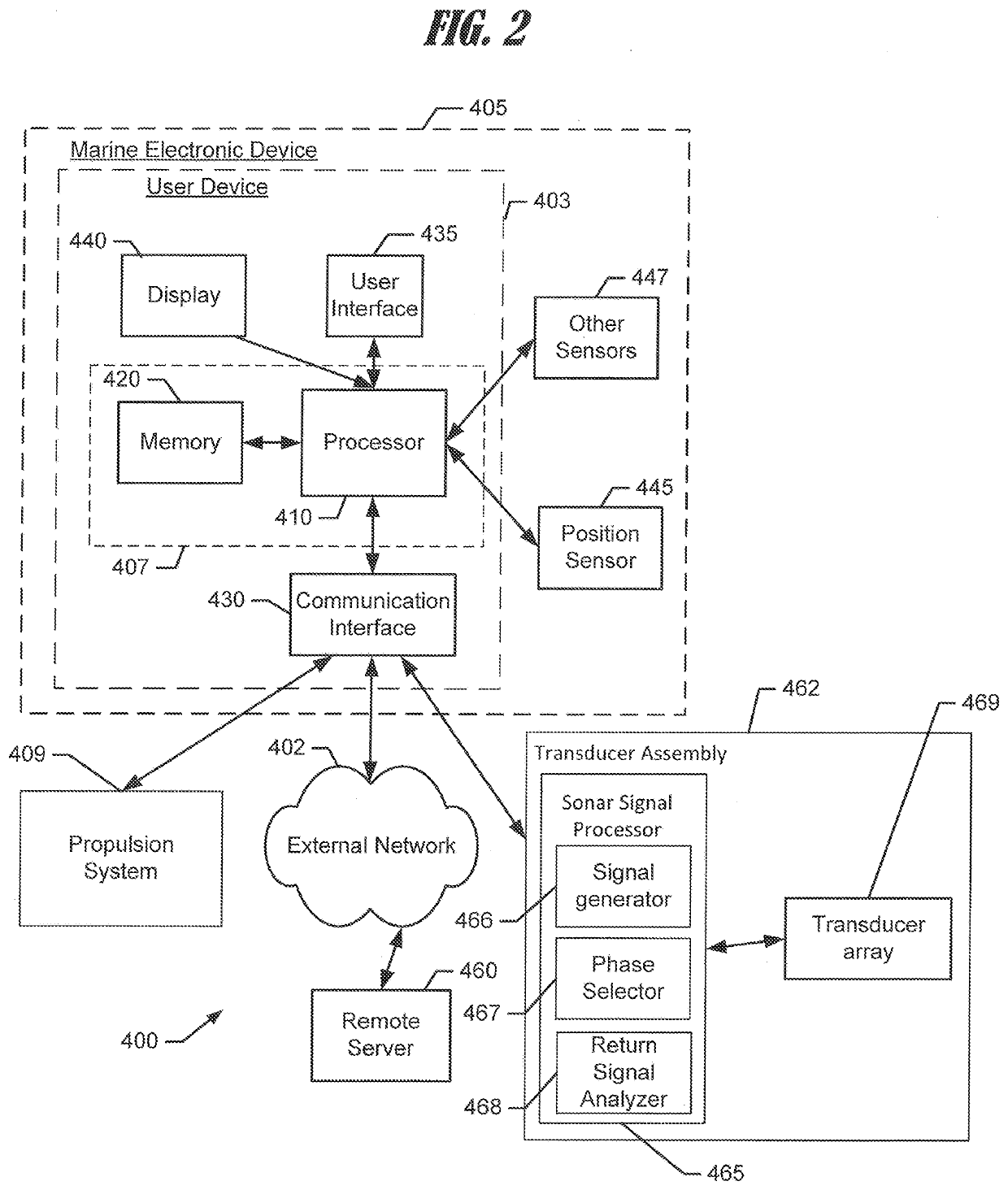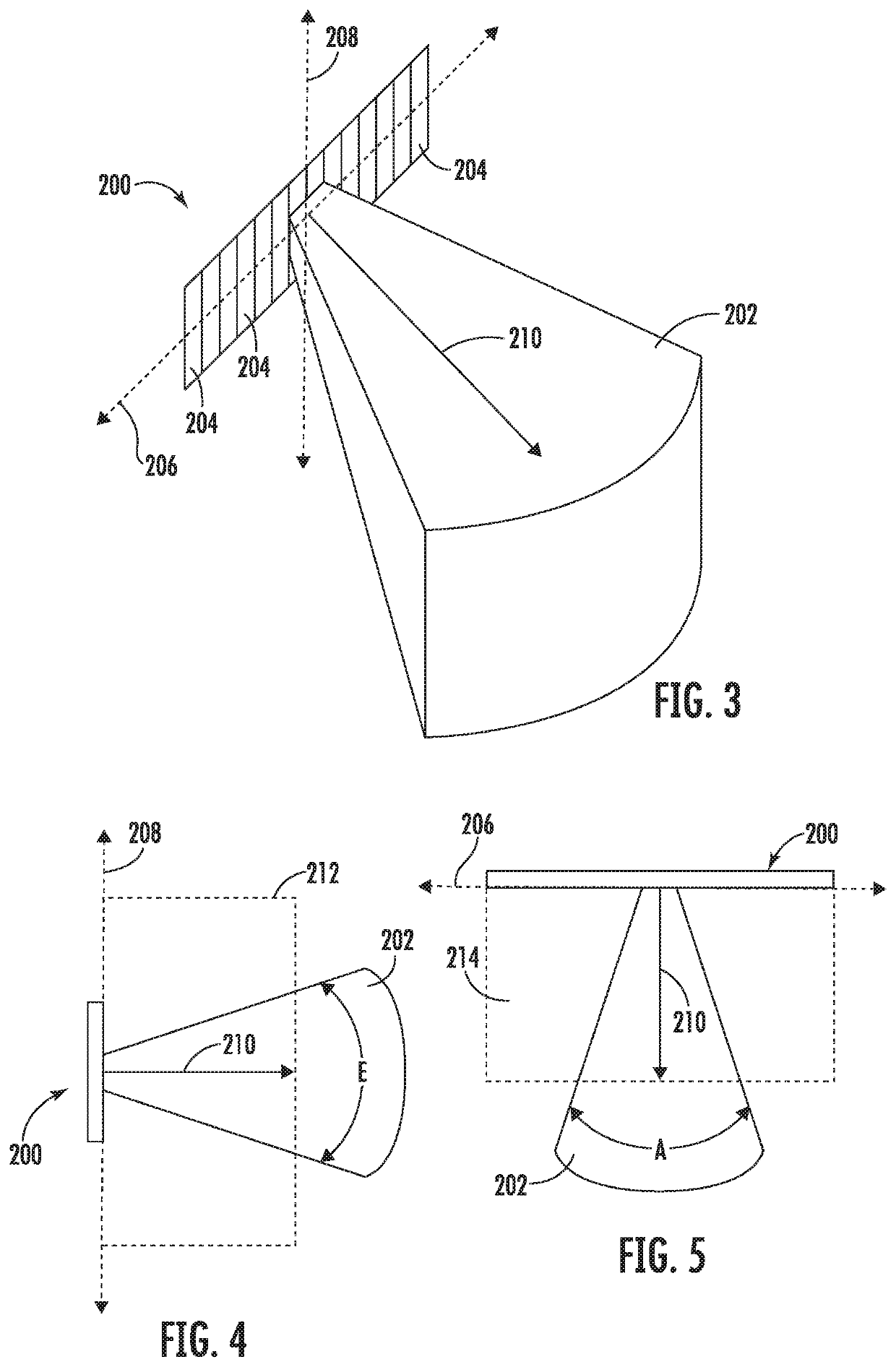Sonar system with increased transverse beam width
a transverse beam and array technology, applied in the field of sonar transducer arrays, can solve the problems of increasing the cost of fabricating arrays on cylindrical contours, inconvenient providing a live side-scan sector image, and small radiating area of arrays, so as to increase the transverse beam width of an acoustic beam, reduce the total radiated power of the beam and reduce the total intensity of the beam.
- Summary
- Abstract
- Description
- Claims
- Application Information
AI Technical Summary
Benefits of technology
Problems solved by technology
Method used
Image
Examples
example environment
[0048]As depicted in FIG. 1, a watercraft, e.g. vessel 100, configured to traverse a marine environment, e.g. body of water 101, may use one or more sonar transducer assemblies 102a, 102b, and 102c disposed on and / or proximate to the vessel. The vessel 100 may be a surface watercraft, a submersible watercraft, or any other implementation known to those skilled in the art. The transducer assemblies 102a, 102b, and 102c may each include one or more transducer elements configured to transmit sound waves into a body of water, receive sonar return signals from the body of water, and convert the sonar return signals into sonar return data.
[0049]One or more sonar, or acoustic, beams may be generated by the one or more transducer assemblies 102a, 102b, and 102c when deployed in the body of water 101. In some instances, a plurality of transducer elements may be embodied in a transducer assembly. In some instances, the transducer assembly may include one or more of a right scanning (e.g., sid...
example architecture
[0056]FIG. 2 shows a block diagram of a computing device, such as user device 403. A depicted computing device is an example marine electronic device 405. The marine electronic device 405 may include a number of different modules or components, each of which may comprise any device or means embodied in either hardware, software, or a combination of hardware and software configured to perform one or more corresponding functions. The marine electronic device may also be in communication with a network 402.
[0057]The marine electronic device 405 may also include one or more communications modules configured to communicate with one another in any of a number of different manners including, for example, via a network. In this regard, the communications module may include any of a number of different communication backbones or frameworks including, for example, Ethernet, the NMEA 2000 framework, GPS, cellular, WiFi, or other suitable networks. The network may also support other data source...
example sonar
Systems
[0075]First, certain aspects of an exemplary configuration and geometry of a transducer array and a resulting acoustic beam are discussed with reference to FIGS. 3-5. These figures present schematic perspective, side, and plan views of a frequency-steered transducer array 200 producing an acoustic beam 202 in accordance with some example embodiments. When used herein, the terms “beam” and “acoustic beam” may refer to a sound wave propagating in a well-defined direction, but they may also refer to a portion of a sound wave pattern wherein the portion propagates along a given direction. Those of skill in the art will appreciate that dispersion of a beam may occur for various reasons, and thus the depictions of acoustic beam 202 in the present disclosure are simplified for the purpose of illustration. Additionally, some example embodiments are described below in the context of sound waves emanating from a transducer array, and thus in FIGS. 3-5 acoustic beam 202 is depicted as p...
PUM
 Login to View More
Login to View More Abstract
Description
Claims
Application Information
 Login to View More
Login to View More - R&D
- Intellectual Property
- Life Sciences
- Materials
- Tech Scout
- Unparalleled Data Quality
- Higher Quality Content
- 60% Fewer Hallucinations
Browse by: Latest US Patents, China's latest patents, Technical Efficacy Thesaurus, Application Domain, Technology Topic, Popular Technical Reports.
© 2025 PatSnap. All rights reserved.Legal|Privacy policy|Modern Slavery Act Transparency Statement|Sitemap|About US| Contact US: help@patsnap.com



